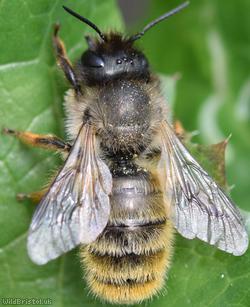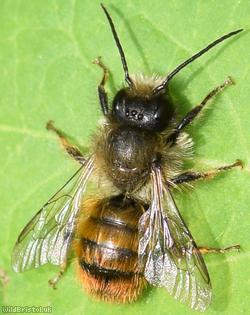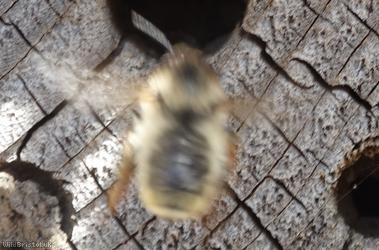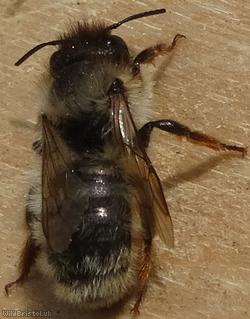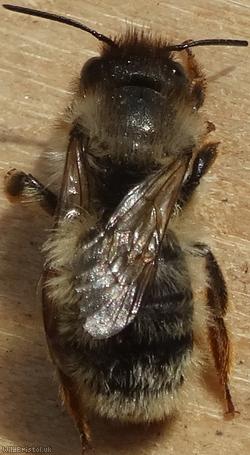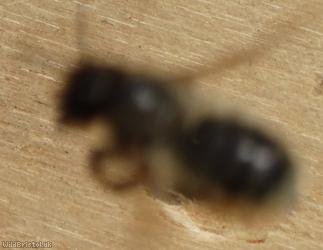Red Mason Bee - Osmia bicornis
Favourite Photos
Species Description
Widespread and fairly frequent throughout the UK though less so in the North. Habitat includes: gardens (often uses Bee hotels), parks, allotments, cemeteries, rock faces, cliffs. Other names include: Osmia rufa. Length: Male = 6 mm, Female = 11 mm. Flight period: Late March to July. They nest in already existing cavities such as hollow plant stems, garden canes, bricks, old nail holes in fence posts, They line the inside with mud, then pile pollen which they collect from a range of flowers depending on what's available - in particular Dandelion, then lay a single egg, then seal the cell with a wall of mud and repeat many times until the tunnel is filled. They always lay Females at the back (because they're more precious), and Males at the front. Females often steal mud and pollen from each others nests which is quite amusing to watch.
Iv'e also observed from my own bee hotel that Males emerge first because they're layed at the front. But what's interesting is that the first one's to emerge, help excavate from the outside, tunnels with bees trying to hatch. You can here the excavating (it sounds a bit like rice crispies crackling). During the evening as the temperature cools, the bees are often seen basking on warm surfaces that have been baked in the sun all day in particular brick walls, wood etc. And later on they retreat back to a sun-baked tunnel / crevice to stay in overnight. Sometimes multiple bees can be seen together presumably to share heat they've trapped during the day. When Females emerge, Males turn on one another and fight, they can often be seen landing on oneanother and tackling them to the ground. Predators.
A main predator I've observed are Tube Web Spiders which often set up a home amongst aggregations, waiting with only their legs exposed to pounce on an unexpecting bee. They often fail but when they do succeed they imediately bite to paralise their prey, then drag it back into they're lair either to eat straight away or wrap it up for storage later. On one occasion I saw a Tube Web Spider catch a Male. And another one tried to free it's friend by repeatedly landing on its back by attempting to fly away, to prise him from the spider.
Parasites: Sapyga quinquepunctata. Probably Dull-vented Sharp-tailed Bee (Coelioxys elongata), Ruby-tailed Wasp (Chrysis ignita), Plain Dark Bee (Stelis phaeoptera), Sawfly Parasitic Wasp (Monodontomerus dentipes), Chalcid Wasp (Monodontomerus obscurus), Cacoxenus indigator - Fruit Fly, Megatoma undata - Beetle, Hairy-footed Mite / Pollen Mite (Chaetodactylus osmiae), Tyrophagus species: Mold Mite / Storage Mite (Tyrophagus putrescentiae), Seed Mite / Copra Mite (Tyrophagus longior).
